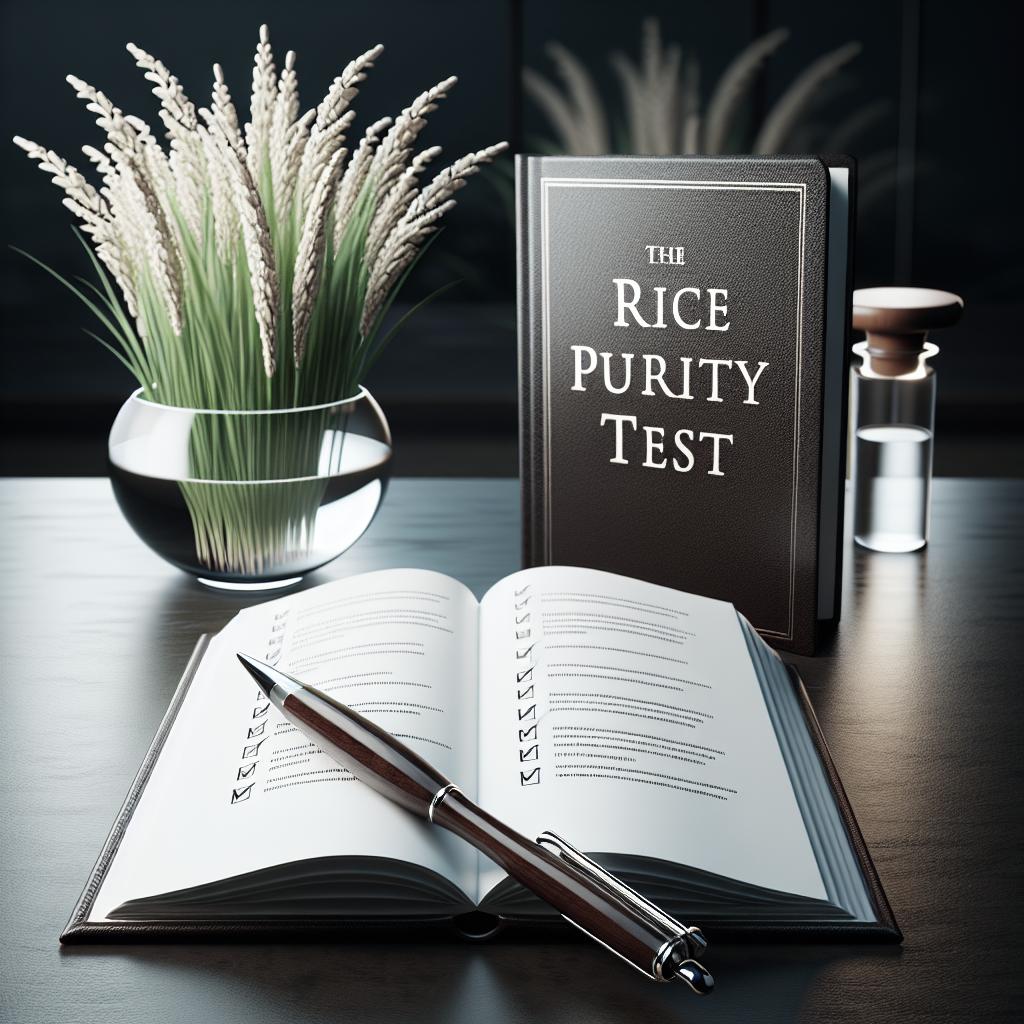Exploring the Rice Purity Test: What Your Score Says About You

Exploring the Rice Purity Test
The Rice Purity Test, originally developed by Rice University, is a self-assessment survey that aims to gauge an individual’s innocence or experience across various life events. It covers topics from relationships to personal habits and has become a viral trend among college students and young adults. In this article, we explore the latest statistical reports up to 2025, shed light on how the test is scored, delve into the interpretation of scores, and discuss the test’s rising popularity and criticisms. Additionally, we provide suggestions for similar reads to broaden your understanding of self-assessment tools, offering a rich tapestry of insights into one of the internet’s most intriguing quizzes.
Statistical Reports updated to 2025
As of 2025, the Rice Purity Test continues to amass data demonstrating trends among young adults, particularly college students. Recent statistical reports indicate that while the average scores have remained relatively stable, subtle shifts in specific demographics have emerged. The test, consisting of 100 questions, serves as a window into the evolving lifestyle choices of Generation Z. From the data collected, social scientists observe that the test’s median score hovers around the mid-60s, suggesting a moderate level of experienced-based maturity among participants.
Analyzing trends over time reveals that younger generations are more open to engaging in diverse life experiences earlier than the preceding cohorts. Factors such as increased connectivity through social media, a broader acceptance of various lifestyles, and increased access to information may contribute to this phenomenon. Researchers suggest these insights reflect socio-cultural changes, highlighting the test as an informal barometer for shifting personal attitudes and behaviors over the years.
How is the Rice Purity Test Scored?
The Rice Purity Test is scored out of a maximum of 100 points, with each “yes” answer deducting a point from this total. The test consists of a wide array of questions ranging from simple to increasingly complex or taboo subjects. The final score gives an indication of one’s overall “purity” or lack thereof. A score closer to 100 implies a more innocent lifestyle whereas a lower score indicates a greater level of worldly experience.
Participants often take the test for fun but, in many circles, it has also been used as a social thermometer for gauging life experiences and understanding where one stands among peers. While inherently subjective, the test provides a quantifiable measure to compare experiences, frequently shared among friends and within campus dormitories as a rite of passage or bonding experience.
Interpreting the Scores
Understanding the scores of the Rice Purity Test involves both factual interpretation and personal reflection. A high score, while indicating innocence, is sometimes met with playful teasing amongst peers, who might encourage the test-taker to seek out more experiences. Conversely, a low score, which represents a wider breadth of experience, can be seen as a sign of maturity or adventurousness.
It’s essential to remember that the Rice Purity Test is meant to be light-hearted and not a definitive measure of a person’s character or life success. Each score reflects unique personal journeys and should be viewed through the lens of individual life circumstances and personal comfort levels with the experiences listed.
Is There a ‘Best’ Score?
When it comes to the Rice Purity Test, there’s no definitive ‘best’ score. The test’s design doesn’t prescribe a normative value to being more or less experienced. Instead, it recognizes the diversity of human experiences. Some might take pride in a high score, valuing lessons learned from a more cautious lifestyle, while others find excitement in the stories behind a lower score.
The cultural context of the test varies across different social landscapes, and it’s crucial to acknowledge its playful nature. Ultimately, the ‘best’ score is subjective and should align with an individual’s values, personal growth, and the context of their unique life path. It’s a personal reflection rather than a judgment of character.
The Test’s Popularity and Criticisms
The Rice Purity Test’s surge in popularity can be attributed to its viral nature, particularly within college settings where it often sparks conversation and camaraderie. Its simplicity and the curiosity it ignites about peer experiences boost its appeal, making it a staple in icebreaker activities and social gatherings.
However, the test is not without its criticisms. Critics argue it can perpetuate peer pressure and foster unhealthy competition, detracting from its intended fun nature. Moreover, the list of questions, despite its attempt to encompass a wide range of activities, might not consider diverse cultural contexts and personal backgrounds, limiting its inclusivity. This scrutiny highlights the importance of viewing the test through a lens of entertainment rather than concrete evaluation.
Similar Reads
For those intrigued by the Rice Purity Test, there are several other quizzes and assessments that offer different insights into personality and lifestyle. The Myers-Briggs Type Indicator (MBTI) is a well-known tool to assess psychological preferences in how people perceive the world and make decisions, adding depth to personal introspection.
Additionally, the Big Five personality test provides a broader analysis of personality traits through openness, conscientiousness, extraversion, agreeableness, and neuroticism. These tests, while more formal in design, complement the Rice Purity Test by offering perspectives geared towards self-improvement and self-awareness. Exploring these can serve as a conduit for deeper understanding of oneself and one’s interactions with the world.
| Subheading | Key Points |
|---|---|
| Statistical Reports updated to 2025 | The test remains popular, highlighting trends in younger generations showing openness to more experiences. |
| How is the Rice Purity Test Scored? | Participants answer 100 questions about life experiences; the score reflects their “purity” level. |
| Interpreting the Scores | High scores indicate innocence; low scores suggest more life experience; both are equally valid. |
| Is There a ‘Best’ Score? | No best score exists; value in scores differs per individual based on personal growth and values. |
| The Test’s Popularity and Criticisms | Popular for its entertainment value; criticized for fostering peer pressure and lacking inclusivity. |
| Similar Reads | Other tests like MBTI and Big Five offer additional self-assessment and personal growth insights. |
This blog post presents a comprehensive look at the Rice Purity Test, providing insights into its scoring, interpretation, and relevance, while also acknowledging its critiques and offering recommendations for further reading.


